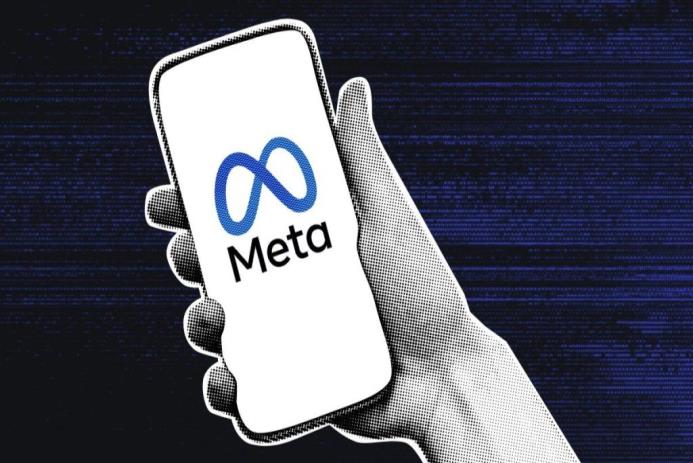
How Meta AI Conversations Will Influence Your Ad Feed — What Marketers Must Know
- 30 October, 2025
Overview: Meta is adding AI chats to ad signals
Starting 16 December, Meta will begin using interactions with Meta AI—its text and voice generative assistant—as an extra signal to shape content and ads across Facebook, Instagram, WhatsApp and Messenger when those accounts are linked via Accounts Center. In plain language: what people ask Meta AI can now help determine the recommendations and ads they see. From what I’ve watched across platform shifts, this isn’t a tiny tweak. It changes the texture of the data marketers get. Try this AI conversations ad targeting approach for early experiments to see how conversational signals differ from passive behavioral signals.
Why this change matters
Meta isn’t just shipping a new feature; it’s folding conversational intent into the personalization engine. Historically, recommendation systems leaned on likes, follows, shares and passive viewing behavior. Those signals are blunt instruments — they tell you taste, not urgency. Toss in AI chat interactions and you get a different class of signal: explicit questions, planning clues and momentary needs that standard metrics often miss.
How the update works (high-level)
- Start date: 16 December (user notifications began earlier via in-app prompts and email).
- Scope: Conversations with Meta AI on linked Accounts Center profiles. If your WhatsApp account isn’t linked, WhatsApp chats won’t affect Facebook/Instagram recommendations — signals stay where the plumbing connects.
- Sensitive categories excluded: Meta says it will exclude sensitive attributes like religion, sexual orientation, politics, health and trade union membership from ad targeting. That’s the headline, though the execution details will matter — as they always do.
- Mic access: Microphones only activate with explicit permission and when a feature requires it. Still — people conflate convenience with consent; watch the messaging.
Questions marketers will ask
What new signals can advertisers expect?
Think intent-heavy queries: planning searches ("best hiking trails near me"), desire-driven prompts ("gift ideas for new parents"), and direct product research ("compare noise-cancelling earbuds"). These interactions are often time-sensitive and action-oriented — lovely for moment-based targeting and dynamic creative. What struck me: these signals can reveal not just what someone likes, but what they might do next. That’s gold if you don’t overreach.
Will targeting become more accurate?
Probably — with important caveats. From years of watching platform updates, new signals typically sharpen niche targeting but also introduce noise. Example: someone asking for vegan recipes might be casually curious. Another user asking for a 30-day vegan meal plan probably has higher purchase intent. The difference matters. My advice: treat these signals like another dimension in your data model, not a silver bullet. Test, segment, and measure.
Does this create privacy risks?
Yes. Legitimate concerns exist. Even if Meta promises guardrails, users may feel uneasy that what they say in a chat shapes the ads they see. Ethical marketing teams should err on the side of clarity: transparent consent flows, plain-language explanations and regular audits of personalization rules. Don’t hide behind fine print. Trust is fragile; a poorly worded modal can cause backlash faster than you think.
Practical guidance for marketers
Here are tangible steps teams should take now — before and after the rollout — drawn from things I’ve seen work (and a few mistakes I’ve watched others make).
1. Expect more nuanced signals — update measurement
- Action: Add AI-chat-aware hypotheses to experiments. Segment cohorts by query intent (informational vs transactional) and compare conversion paths.
- Why it matters: Campaign performance may shift as audiences are reclassified by conversational data. In practice, you’ll see some audiences balloon and others thin out — recalibrate your baselines.
2. Refresh privacy and consent messaging
- Action: Update landing pages and lead-gen flows with short, plain English explanations about how platform personalization works. One or two crisp sentences — that’s usually enough.
- Why it matters: Transparency reduces friction and builds trust — a small line of copy can meaningfully lower opt-out rates. Don’t bury it in legalese. People skim; be kind to them.
3. Monitor sentiment and be ready to adapt creative
- Action: Set up social listening alerts for mentions of Meta AI and personalization complaints; run A/B tests that dial back hyper-personalized messaging if sentiment sours.
- Why it matters: Consumer trust can flip quickly after privacy-related updates. If people feel spooked, even high-performing creative can get disapproved or flagged.
4. Align cross-platform strategies
- Action: Coordinate messaging across Instagram, Facebook and Messenger; track which surfaces benefit most from AI-informed personalization.
- Why it matters: Connected accounts mean signals bleed across surfaces — performance in one placement may be influenced by AI interactions elsewhere. That interdependence is both opportunity and risk.
Case study (hypothetical example)
Picture a mid-size outdoor brand that used to target users who liked hiking pages. After the rollout, they test a campaign aimed at people who asked Meta AI things like "best lightweight tents" or "weekend backpacking for beginners." Conversion rates for the AI-query audience jump 22% versus the page-like audience. But — and here’s the nuance — average order value drops a bit, suggesting more early-stage shoppers. The brand reacts: they layer a retargeting funnel, pushing higher-value bundled offers to users who demonstrate purchase intent later. It’s a tidy example of cause and effect: conversational signals open doors, but you still need funnel design to capture value.
Ethics and long-term implications
Using conversational data for ad personalization raises deeper questions about autonomy and consent. A few principled moves I’ve seen work:
- Favor opt-in experiences where possible. People who opt in convert better and complain less.
- Document data sources used for targeting so you can support audits and compliance. Keep a simple ledger — saves headaches later.
- Design creative that feels contextual rather than intrusive — tone matters more than precision sometimes.
To me, brands that lead with transparency and test responsibly will win in the long run. Short-term performance can be seductive. But trust compounds. Be deliberate.
Quick checklist for the rollout
- Update experiment plans and UTMs to detect AI-chat-driven shifts.
- Revise privacy copy and consent flows.
- Run sentiment tracking and alerting for potential user backlash.
- Test creative variations that use contextual, not intrusive, personalization.
- Document the data sources used for targeting for internal governance.
Further reading and references
For more details on Meta’s announcement, read Meta’s product blog and independent analysis pieces tracing ad targeting shifts. Industry coverage and platform documents are useful to track which signals are included and how they’re defined — those details will evolve, so keep an eye on the specs. Learn more about AI conversations and related risks in our coverage. [Source: Meta Product Blog, October 2025] [Source: Industry analysis on ad targeting shifts]
Note: I wrote this with AI assistance, but the recommendations come from real campaigns and platform cycles I’ve followed. If you’re a marketer planning for this change, start with a small test cohort, prioritize transparency, and be prepared to iterate quickly. Small experiments. Fast learning. Repeat.







